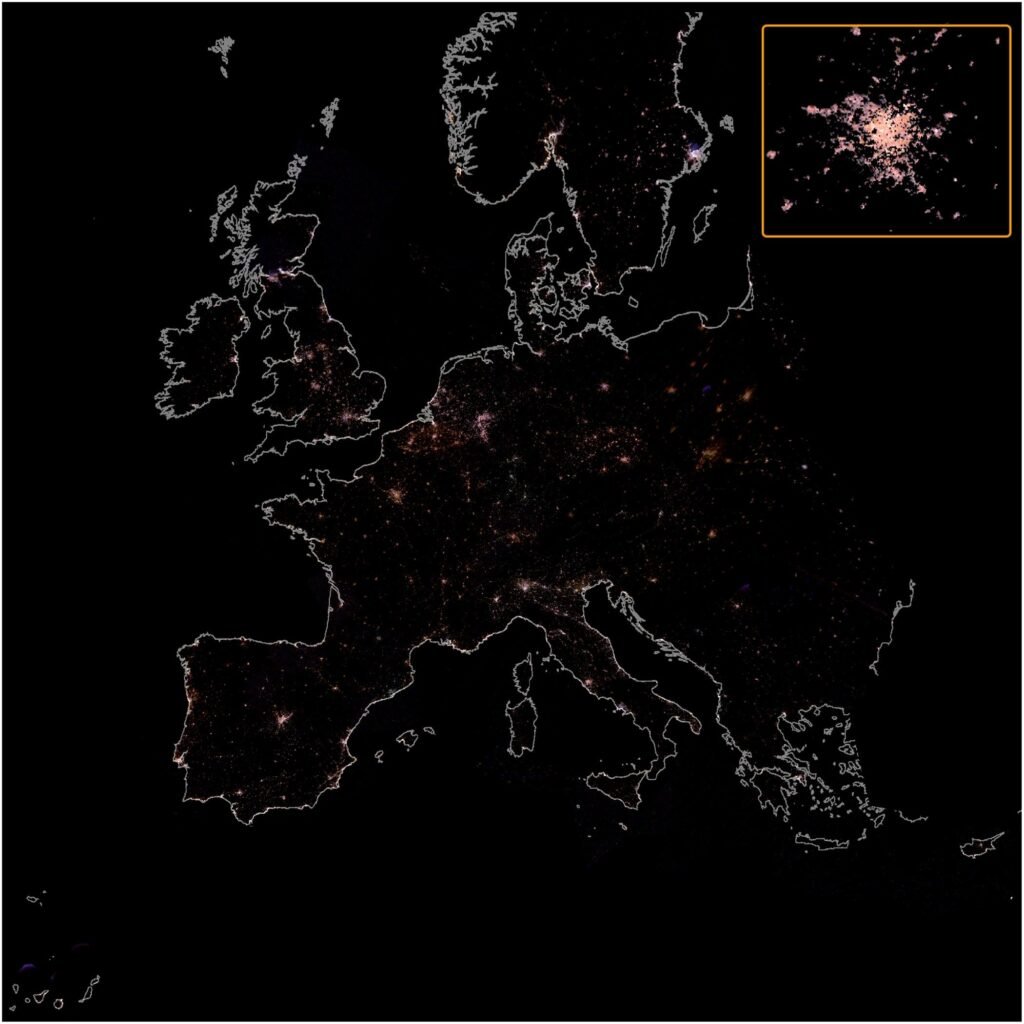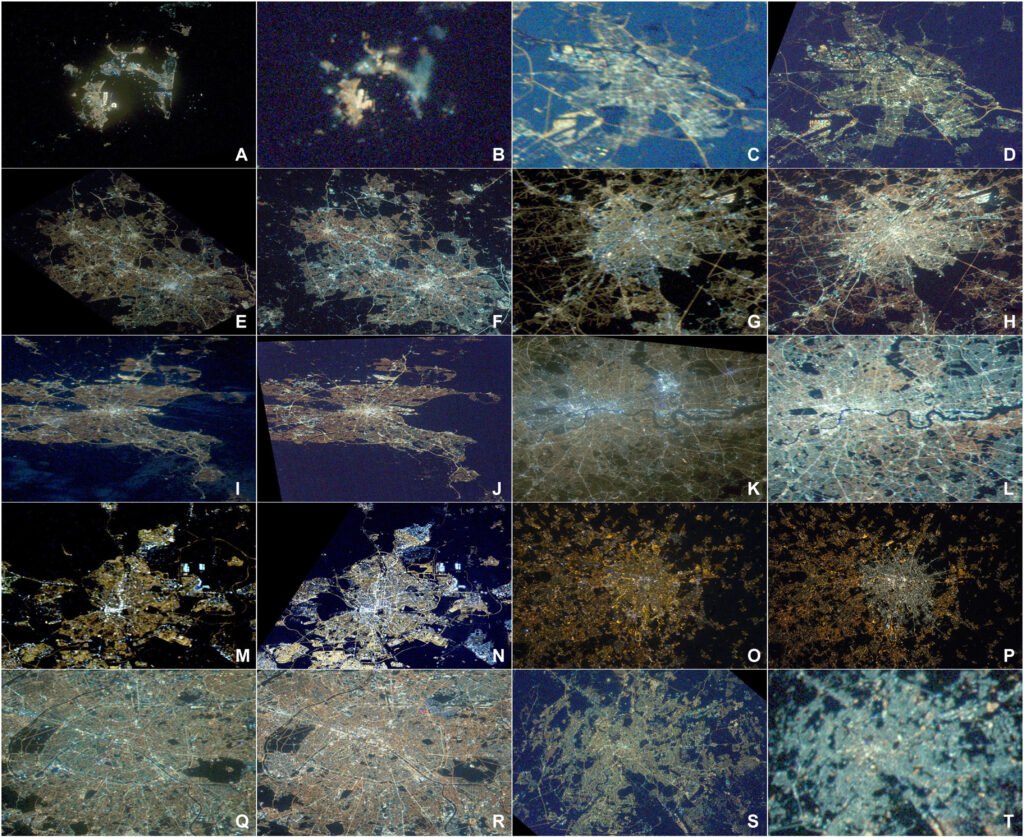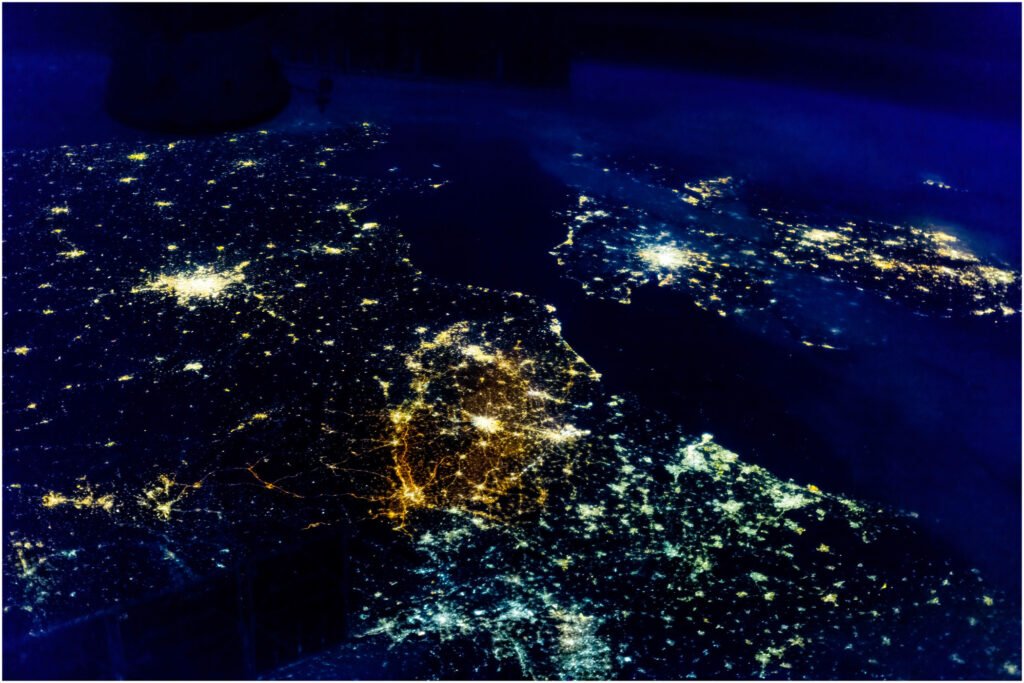In a new study, researchers have discovered that the more energy efficient and higher visibility LED lights that are rapidly replacing the old school sodium lights for outdoor use in Europe are bringing with them some unintended but drastic consequences. The study was researching the spectral composition of the continent’s lighting using images captured from the International Space Station.

Focusing on the suppression of melatonin — the hormone that regulates sleep cycles — star visibility, and insects’ response to light, the researchers found that all categories were negatively affected. Since 2013, the degree of melatonin suppression in humans has increased, stars are less visible, and insects’ responses to light have been altered unnaturally.

Comparison of images obtained from the ISS for Gibraltar/Algeciras in (A) 2012 and (B) 2020, Amsterdam in (C) 2012 and (D) 2016, Birmingham in (E) 2013 and (F) 2020, Brussels in (G) 2013 and (H) 2019, Dublin in (I) 2012 and (J) 2014, London in (K) 2012 and (L) 2020, Madrid in (M) 2012 and (N) 2017, Milan in (O) 2012 and (P) 2015, Paris in (Q) 2012 and (R) 2020, and Rome in (S) 2012 and (T) 2020. Images (see data file S2) have been color-calibrated following (49), except those for Milan, which were processed by the International Astronomical Union.
“This trend of replacing old school sodium lights with LED is significantly raising the likelihood of adverse consequences on ecosystems,” the researchers write.
Indeed, blue light is often suspected of suppressing the body’s melatonin synthesis. And, with it strewn throughout the environment, it’s easy to see how LED’s blue light may have negative consequences on humans as well as animals, or, as the paper puts it, “severe biological implications.”

Color-enhanced ISS image (iss038e014887, 10-12-2013). Belgium in the middle with orange color, characteristic of use of low-pressure sodium lights and with roads lit. The Netherlands, France, and the United Kingdom, at the right, left, and top, respectively, with yellowish color from high-pressure sodium lights. Germany at the bottom, with blueish color from fluorescent and mercury vapor lights. Figure S3 provides a reprojected version of this image, with country boundaries.
But what of LED’s supposed benefits? Are they worth drenching the night in a clinical white? The researchers don’t think so.
“The benefits that LED technology may provide, particularly for street lighting over already highly efficient sodium lights, are “extremely context specific,” citing various studies.
It appears that using yellower, warmer lights to brighten the night would be preferable than damaging the local ecosystem.
Reference- Science Advances, Futurism, Popular Science, Interesting Engineering






